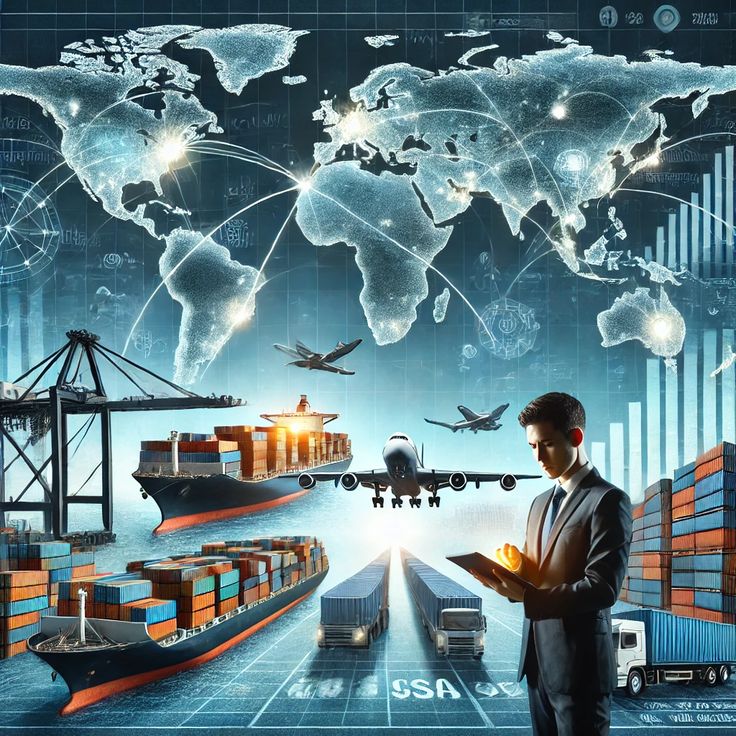In 2025, the global trade landscape presents a complex array of challenges for import export companies. From geopolitical tensions to technological disruptions, businesses engaged in international trade must navigate a multifaceted environment. This blog delves into the most pressing challenges faced by import export companies in 2025, offering insights into their implications and potential strategies for mitigation.
Table of Contents
1. Geopolitical Tensions and Trade Wars

Geopolitical dynamics have significantly impacted global trade in 2025. The re-election of Donald Trump and the subsequent revival of aggressive trade policies have introduced substantial volatility. For instance, the imposition of tariffs up to 145% on Chinese goods disrupted supply chains and compelled businesses to seek alternative markets or suppliers. Although some tariffs were later reduced, the initial uncertainty caused significant disruptions.
Similarly, the threat of a 50% tariff on all EU exports to the U.S. has alarmed European industries, particularly the automotive, aerospace, and pharmaceutical sectors. Such policy shifts necessitate that import export companies remain agile and informed to adapt swiftly to changing trade regulations.
2. Supply Chain Disruptions and Logistics Challenges

Supply chain resilience has become a paramount concern. China’s export restrictions on rare earth magnets, essential components in various industries, have threatened to halt production lines in countries like India. Indian automakers, including Maruti Suzuki and Tata Motors, faced potential shutdowns due to these curbs.
Additionally, the impending end of a U.S.-China trade truce has led to a surge in shipping demand, doubling container costs from China to the U.S. West Coast. This rush has strained logistics networks, leading to port congestion and delayed shipments.
3. Regulatory Compliance and Bureaucratic Hurdles

Navigating the complex web of international regulations remains a significant challenge. In India, exporters grapple with intricate GST procedures, export licenses, and quality certifications. Frequent policy changes, such as abrupt export restrictions, further complicate compliance efforts.
In the UK, post-Brexit uncertainties have led to wasted investments in preparation for sanitary and phytosanitary checks that were indefinitely delayed. Such unpredictability hampers long-term planning and erodes business confidence.
4. Currency Fluctuations and Financial Risks

Exchange rate volatility poses financial risks for import export companies. Fluctuations can erode profit margins and complicate pricing strategies. Indian exporters, for instance, face challenges due to the rupee’s instability against major currencies and limited access to affordable trade finance.
Globally, companies employ hedging strategies and financial instruments to mitigate these risks, but such tools may be inaccessible or costly for small and medium-sized enterprises (SMEs).
5. Technological Disruptions and Cybersecurity Threats
The rapid digitization of trade processes introduces both opportunities and vulnerabilities. While technologies like blockchain and AI streamline operations, they also expose businesses to cybersecurity threats. Data breaches and cyberattacks can disrupt operations and compromise sensitive information.
Moreover, the adoption of advanced technologies requires significant investment and expertise, which may be challenging for SMEs. Ensuring cybersecurity and keeping pace with technological advancements are critical for maintaining competitiveness.
6. Environmental Regulations and Sustainability Pressures
Environmental concerns have led to stricter regulations on trade. Import export companies must comply with various environmental standards, such as the EU’s REACH and RoHS directives. Non-compliance can result in penalties and loss of market access.
Additionally, consumer demand for sustainable products pressures companies to adopt eco-friendly practices, from sourcing to packaging. Balancing regulatory compliance with sustainability initiatives requires strategic planning and investment.
7. Cultural and Language Barriers
Operating in diverse markets necessitates cultural sensitivity and effective communication. Misunderstandings due to language differences or cultural nuances can jeopardize negotiations and partnerships.
Investing in cultural competency training and employing multilingual staff can enhance cross-cultural interactions, fostering stronger international relationships.
8. Access to Trade Finance and Payment Risks
Securing financing for international transactions remains a hurdle, particularly for SMEs. High-interest rates and stringent lending criteria limit access to necessary funds. In India, export finance interest rates exceed 12%, placing exporters at a disadvantage compared to competitors in countries with more favorable financing conditions.
Furthermore, concerns about payment defaults and fraud necessitate robust risk assessment and the use of secure payment methods, such as letters of credit.
9. Infrastructure Limitations
Inadequate infrastructure hampers efficient trade operations. In India, constraints in ports, roads, and railways lead to delays and increased logistics costs. Limited last-mile connectivity and insufficient warehousing facilities further exacerbate these challenges.
Addressing infrastructure deficits is crucial for enhancing supply chain efficiency and competitiveness in the global market.
10. Talent Shortages and Skill Gaps
The import export companies sector requires specialized skills in areas like international marketing, logistics, and compliance. However, a shortage of trained professionals impedes operational efficiency. In India, the lack of skilled personnel in export-import management and logistics poses significant challenges.
Investing in education and training programs can bridge skill gaps, ensuring a competent workforce capable of navigating the complexities of global trade.
Conclusion
The import export companies landscape in 2025 is marked by multifaceted challenges that demand strategic foresight and adaptability. Companies must proactively address geopolitical uncertainties, supply chain vulnerabilities, regulatory complexities, and technological disruptions. By investing in infrastructure, embracing technological advancements, fostering cultural competencies, and developing skilled talent, businesses can navigate the evolving global trade environment and seize emerging opportunities.

